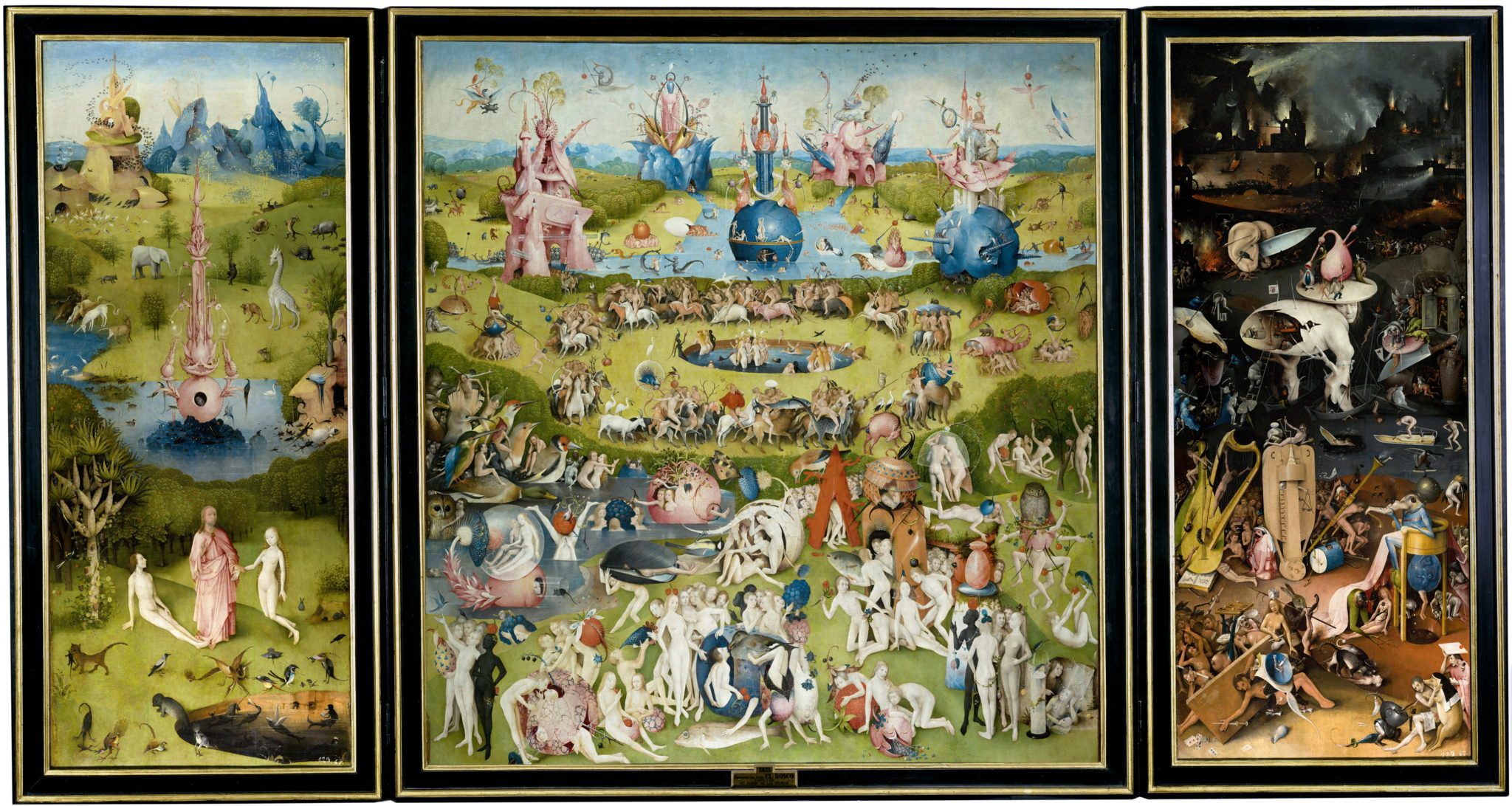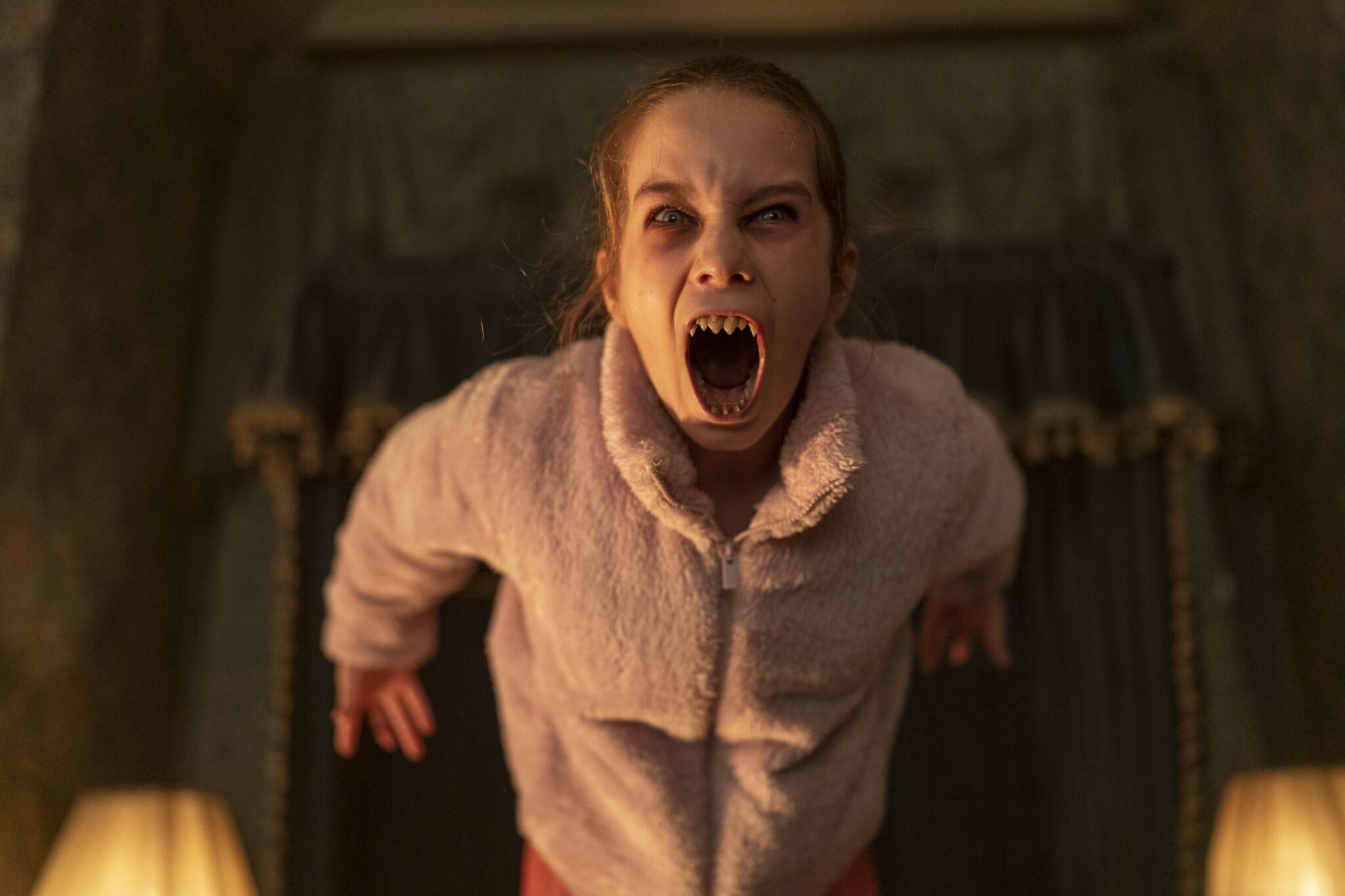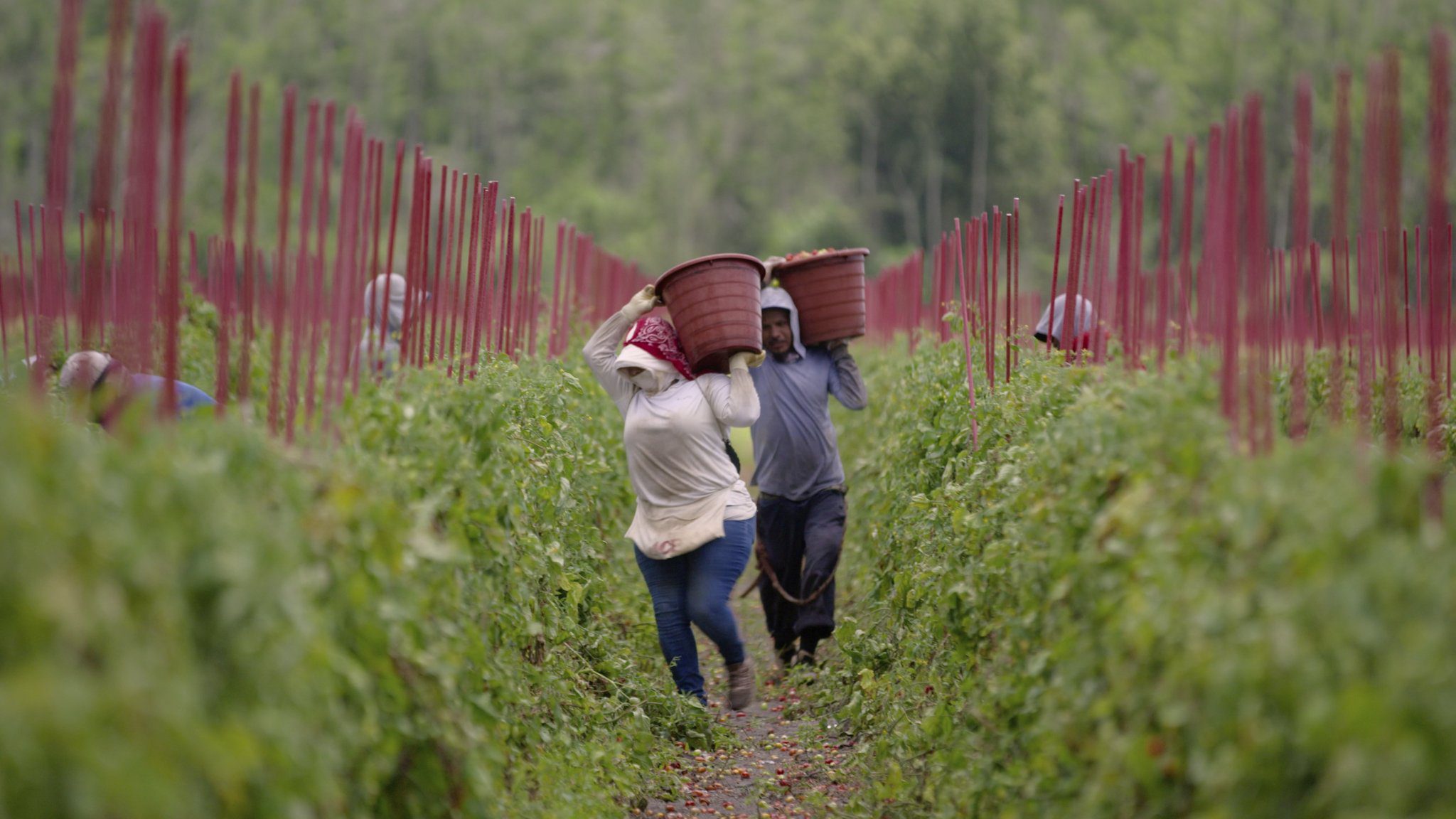 Before the Flood opens with a Heironomus Bosch triptych, ?The Garden of Earthly Delight?, which Leonardo DiCaprio tells us is one of his earliest memories because a print of these paintings hung over his bed as a child. On the right, the painting is a scene of Eden, on the left a depiction of Hell. In the middle a very involved scene with various people who are in the midst of life?perhaps living out the sins of the world. That makes for an interesting setting to talk about the dire aspects the world faces because of climate change.
Before the Flood opens with a Heironomus Bosch triptych, ?The Garden of Earthly Delight?, which Leonardo DiCaprio tells us is one of his earliest memories because a print of these paintings hung over his bed as a child. On the right, the painting is a scene of Eden, on the left a depiction of Hell. In the middle a very involved scene with various people who are in the midst of life?perhaps living out the sins of the world. That makes for an interesting setting to talk about the dire aspects the world faces because of climate change.
Many may not know that U.N. Secretary General Ban Ki-Moon designated DiCaprio as a Messenger of Peace focusing on climate change. Before the Flood is a way we get to see what that means for him. To be sure, he is banking on his celebrity to travel the world and meet with many people, some of great power, to discuss the causes and possible solutions to climate change. Among those he meets with are President Obama, Secretary of State John Kerry, and Pope Francis. He also sees first hand some of the destruction that is causing climate change and is being caused by climate change. Like Al Gore?s An Inconvenient Truth, this is intended to bring to light the dangers we are facing.
One of the differences between this film and the earlier documentary is DiCaprio?s personality. Early in the film he notes that he may not be the best person to serve as a Messenger of Peace because he is so pessimistic about our being able to respond to climate change. In the Q&A with director Fisher Stevens and writer Mark Monroe after the screening I attended, they spoke of DiCaprio?s darker vision and their more optimistic views as they were making the film. I think that tension helps to give the film some balance rather than being only gloom and doom.
Those who follow climate change may not find a lot of new information in this film, but it is often put forward in new easily understandable ways. For instance, I kind of liked the comparison of a ? pound hamburger having the same carbon footprint as driving 42 miles in my Prius (a bit less that I put on the car when I drove to and from the screening).
One of my thoughts while watching the film was what the carbon footprint of this film was, since DiCaprio was traveling so much to see so many places in the world. The producers thought of that as well and paid a voluntary carbon tax to offset what the film was adding to the climate change problem. They also offer a website where people can calculate their own carbon tax. (A carbon tax, by the way, is one of the key ways being considered to help cut emissions.)
One section of the film points to the spiritual aspects of climate change. DiCaprio gets an audience with Pope Francis (who issued an encyclical, Laudato Si’, dealing with the issue. While we only see a bit of footage but hear no conversation, DiCaprio later summarizes their meeting.
Besides its theatrical release, this film will be broadcast by National Geographic Channel, commercial free, in 171 countries around the world on October 30. They were clear they thought it important for it to be seen before the U.S. election.
The film returns at the end to the Bosch triptych. It serves as a metaphor not only of the spiritual aspects of Paradise and Perdition, but also of how close we may be coming to living in a world that becomes its own kind of Hell. And we are reminded that it is in the middle part of that set of paintings that we live now, and have a chance to determine what our world will be.




